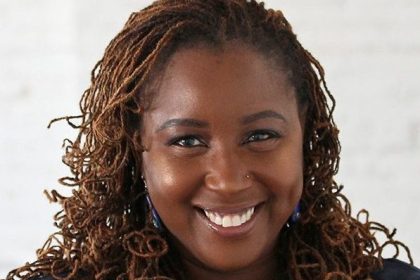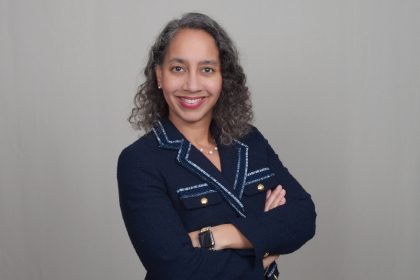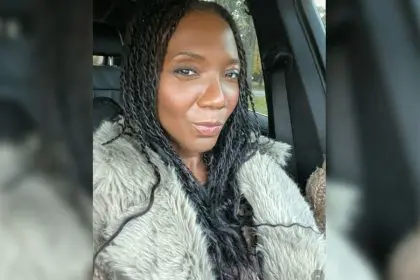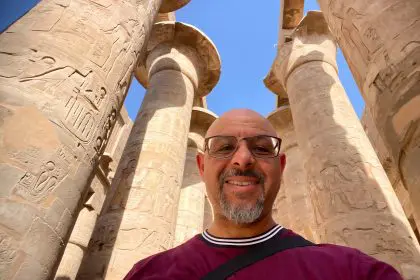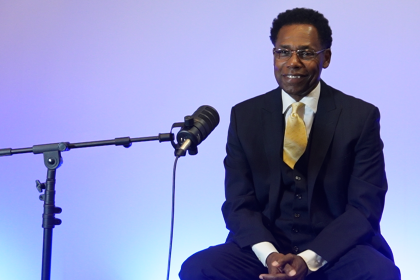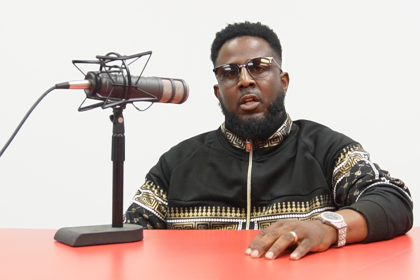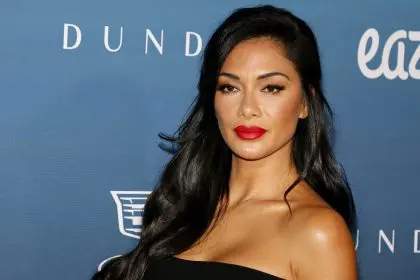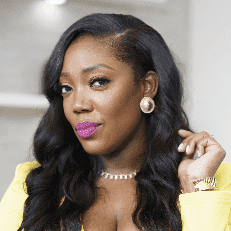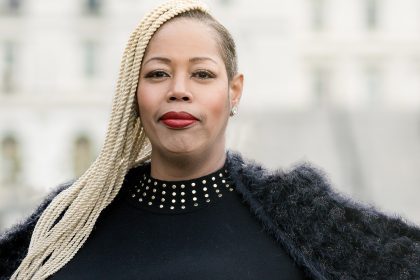Crystal Windham is the executive director of Global Industrial Design at General Motors and is responsible for supporting General Motors’ visual identity and its global brands. Windham leads many teams, including color and trim, design sustainability, graphic design, experiential events, community outreach, merchandise development, creative visualization, and more. Since joining General Motors in 1994, her assignments have included multiple vehicle brands and special project work abroad.
Tell us about your journey as a designer.
I was born and raised in Detroit. I took an art class in my 10th-grade year and I had an amazing time. The instructor at the time was Jim Jennings and it was the only year that he taught at the school in art. I enjoyed being creative in drawing, and I could really immerse myself and be creative, and he wanted to speak to my parents because he thought I had talent, so that was so important to me. We went to the parent-teacher conference and spent some time with him, and he encouraged my parents to help me pursue an art-based career, so he led us to the College for Creative Studies. It was there that I learned about all these other careers and the possibilities of how I could take my creative talent and apply it to an area.
At the time, we decided industrial design would be the focus. Industrial design is if you just imagine the whole world is full of products and environments that need aesthetic direction. That also includes automotive design. After building a portfolio I started during my freshman year the chairman of automotive design came to me and said “I see you love sketching. Have you ever thought about sketching cars?” At the time I didn’t, and I took an intro to auto class and I loved it. I found it so challenging. When you think about a product that impacts so many lives, an automobile does that. From there I received several internships and opportunities. One was at Ford and the other was at General Motors in my junior year, which really allowed me to find my fit and my family here. I had various assignments, and they helped to open my eyes to getting out of my comfort zone, looking at the vehicle design and how it’s expressed in different regions. I got that urge from that time to push myself as a stretch myself, so I took on those assignments, which allowed me to take on more responsibility.
What is your role as the executive director of global industrial design at General Motors?
I’m so honored to be in this role as one of the largest roles within GM design. Essentially, we are the creative problem solvers and we help with the aesthetic direction. How to really amplify the product designs that we work on such as vehicle design, environments, and architecture, we have that influence. So when you think about color, materials, and finishes for all of General Motors, we have that opportunity to take the forms and the overall statement and amplify with the different colors, materials, and finishes. Exterior color is well is part of the role. So not just on the inside, but the exterior as well and planning the new colors of the future. When I talk about the interiors, and all the componentry, screens, buttons, and knobs, we had the opportunity to provide a vision and strategy for all the brands, as it relates to all of those components as well.
Who inspired you to pursue your dream of designing?
I have to give credit to that 10th-grade teacher for getting me pointed in the right direction and confirming my talent. I think that is so important for young creatives today to understand that. It’s one thing to say, “I want to do something,” but is your skill set there? The passion needs to be there, the dedication, but knowing that you actually have the raw talent is so very important. So I have to give that credit number one, too, once I became interested in the automotive side of things. I had two uncles that were working at GM at the time, and they got busy finding someone that looked like me in the business. Representation is so important. They found Marietta Ellis, and she was my first mentor. She was actually the first Black female designer in history. She was here at General Motors and when I interned here; she had a huge influence on me.
Why are Black women needed in design?
We don’t have enough. Being a diverse organization allows us to be more competitive. We need to reflect our customer base. You get more ideas and you can see the designs get even better. We believe in diversity here at General Motors, and we have a lot of diversity. When you look at the Black woman, I feel as though we’re very educated, make a lot of decisions at home, and we know how to spend money. We want to make sure that they’re represented as we’re designing our vehicles, so I think it’s a good proposition. We have a lot of style and flair.
How did you find your voice in the design industry?
You have to be brave, you have to put in a lot of practice, especially when you’re still drawing on the board and competing in that manner. I would say that it’s about understanding through mentors and the feedback that you receive from your leaders, what kind of reaction you get, and then allowing yourself to be better. Know what your strengths are and stay true to them, and continue to work at them.



